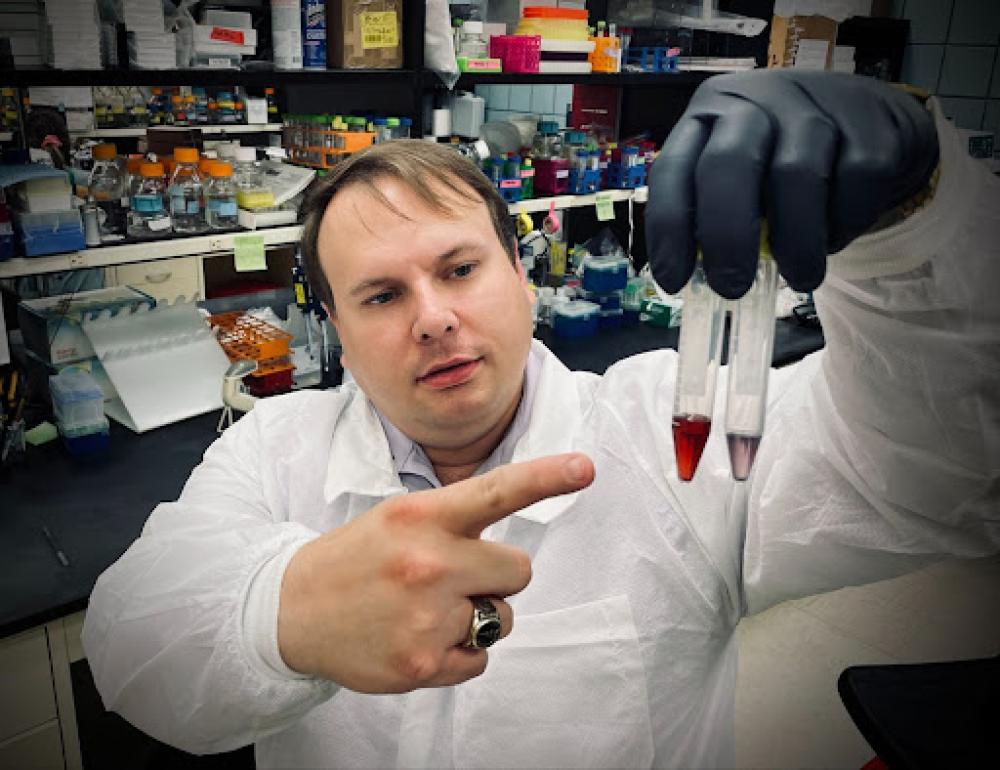An innovative lens on prions in the environment
August 14, 2023

Stuart Lichtenberg jokingly calls himself a jack-of-all-trades and master of none. But those familiar with his work know that “master of many” would be a far more accurate descriptor.
That’s why the Department of Veterinary and Biomedical Sciences and the Minnesota Center for Prion Research and Outreach (MNPRO) were glad that Lichtenberg joined CVM this year: his BS in agricultural biotechnology and PhD in integrated plant and soil sciences, both from the University of Kentucky, paved the way for a postdoc at the University of Wisconsin-Madison, where he was introduced to prion research—all of which have given him a unique skill set and perspective that is already proving invaluable to his team.
Lichtenberg’s PhD research focused on the environmental toxicology of nanomaterials. More specifically, he studied next-generation pesticides, which are designed to target specific genes in insect pests, using a technology called RNA interference (RNAi). These pesticides can impact a target pest without harming other insects or animals. In RNAi pesticides, genetic technology is combined with a nanomaterial-based delivery system, and Lichtenberg was especially interested in how these materials interact with the environment.
“One of the things I liked about my PhD was that it took a synthetic science approach—a synthesis of many different fields. I’m able to do just about anything with that. The same was true when I got into prion research,” Lichtenberg said. Prions are misfolded proteins that cause transmissible, untreatable, and fatal brain diseases such as chronic wasting disease. “Folks don’t always think about it this way, but prions can be looked at as nanomaterials themselves. That helps to understand their behavior, their microbiology, their similarities to persistent organic pollutants, and so on.”
He was able to explore these ideas during his postdoc in the lab of Professor Joel Pedersen at UW-Madison, where his work focused on the environmental implications of prion diseases. It was there, too, that he made his first connection to the MNPRO team, who reached out to him about a protocol he had developed to work with RT-QuIC—a highly sensitive assay for prion detection—in soils.
But when Professor Pedersen passed away suddenly in 2022, Lichtenberg wasn’t sure of the best way forward for the numerous projects he and Pedersen had underway. When he learned that there was a position available at MNRPO, he knew immediately that it would be the right home to carry on that legacy.
Lichtenberg says that his colleagues at MNPRO share his jack-of-all-trades curiosity and his passion for cross-disciplinary collaboration. “We have experts in epidemiology who are interested in soils, engineers and materials scientists who are interested in disease processes…one of the great strengths of MNPRO that distinguishes us in the field is that we strive to include as many different scientific perspectives as possible in the work we’re doing,” he says. “And everyone who is participating brings something important to the table.”
Lichtenberg’s contribution to that table is certainly important, with a number of active grants and partnerships, including the Michigan DNR, Wisconsin DNR, Tennessee Wildlife Resources Agency, USDA-APHIS, US Geological Survey, and more. And he was senior author on a recent study published in Nature Scientific Reports about the potential for ticks to harbor and spread chronic wasting disease (CWD) that has garnered broad public and scientific interest.
His current projects expand his work on CWD to examine novel testing methods, the persistence of CWD prions in soil, the effectiveness of a range of decontamination approaches, and more. “It’s a challenging enough field, and a broad enough field, that I’m able to approach it from any number of ways, Lichtenberg says. “I’ll certainly never get bored with the different ways that the problem of prion diseases in the environment can be studied.”


